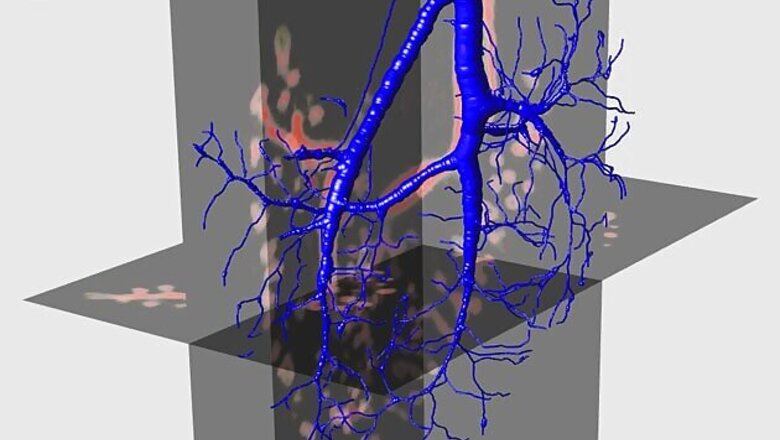
views
Washington: Researchers have developed a 'virtual finger' technology that enables them to navigate and analyse 3D images of complex biological structures.
The new technology allows scientists to move through digital images of small structures like neurons and synapses using the flat surface of their computer screens.
"Using Virtual Finger could make data collection and analysis ten to 100 times faster, depending on the experiment," said Hanchuan Peng, Associate Investigator at the Allen Institute for Brain Science.
Most other image analysis software works by dividing a three-dimensional image into a series of thin slices, each of which can be viewed like a flat image on a computer screen. To study three-dimensional structures, scientists sift through the slices one at a time: a technique that is increasingly challenging with the advent of big data.
"Looking through 3D image data one flat slice at a time is simply not efficient, especially when we are dealing with terabytes of data," said Peng.
"This is similar to looking through a glass window and seeing objects outside, but not being able to manipulate them because of the physical barrier," Peng said.
Virtual Finger allows scientists to digitally reach into three-dimensional images of small objects like single cells to access the information they need much more quickly and intuitively.
"When you move your cursor along the flat screen of your computer, our software recognises whether you are pointing to an object that is near, far, or somewhere in between, and allows you to analyse it in depth without having to sift through many two-dimensional images to reach it," said Peng.
Scientists at the Allen Institute are already using Virtual Finger to improve their detection of spikes from individual cells, and to better model the morphological structures of neurons.
The technology has been applied to perform three-dimensional microsurgery in order to knock out single cells, study the developing lung, and create a map of all the neural connections in the fly brain.
The software and its applications are profiled in the journal Nature Communications.
####




















Comments
0 comment